New Exact Solutions of the Generalized Benjamin–Bona–Mahony Equation
Abstract
1. Introduction
2. The Main Steps of GERFM
- Let us take into account the nonlinear PDE in the form:Using the transformations and , Equation (6) is reduced to following NODE as:where the values of and l will be found later.
3. Utilization of GERFM for the GBBM Equation
- Family 1:
- We attain and , so we will obtain
- Case 1:
- These resulting values direct us to haveConsequently, we can get the following exact wave solutionwhere
- Case 2:
- ledHence, we get the following solitary wave solution for GBBM aswhere
- Family 2:
- We attain and , so we will obtain
- Case 1:
- These resulting values help us to haveConsequently, the following exact wave solution is determinedwhere
- Family 3:
- We attain and , so we will obtain
- Case 1:
- These resulting values led us to obtainHence, one arrives to the following exact wave solution:where
- Family 4:
- We attain and , so we will obtain
- Case 1:
- These solutions direct us to getAs a result, we can get the following exact wave solution:where
- Family 5:
- We attain and , so we will obtain
- Case 1:
- Then, we arrived toTherefore, the following exact wave solution for the equation is achievedwhere
- Family 6:
- We attain and , so we will obtain
- Case 1:
- These values let us to considerThus, we obtainwhere
- Family 7:
- We attain and , so we will obtain
- Case 1:
- These resulting values help us to considerAccordingly, we can get the following exact wave solutionwhere
- Family 8:
- We attain and , so we will obtain
- Case 1:
- From these results, one hasThus, we can get the following exact wave solutionwhere
- Family 9:
- We attain and , so we will obtain
- Case 1:
- These results suggest us to haveAt this point, the following exact wave solution is formulatedwhere
4. Conclusions
Author Contributions
Funding
Conflicts of Interest
References
- Benjamin, T.B.; Bona, J.L.; Mahony, J.J. Model equations for long waves in nonlinear dispersive systems. Philos. Trans. R. Soc. Lond. Ser. A 1972, 272, 47. [Google Scholar] [CrossRef]
- Yan, C. Regularized long wave equation and inverse scattering transform. J. Math. Phys. 1993, 24, 2618–2630. [Google Scholar] [CrossRef]
- Meiss, J.; Horton, W. Solitary drift waves in the presence of magnetic shear. Phys. Fluids 1982, 25, 1838. [Google Scholar] [CrossRef]
- Belobo, D.B.; Das, T. Solitary and Jacobi elliptic wave solutions of the generalized Benjamin–Bona–Mahony equation. Commun. Nonlinear Sci. Numer. Simulat. 2017, 48, 270–277. [Google Scholar] [CrossRef]
- Muatjetjeja, B.; Khalique, C.M. Benjamin–Bona–Mahony Equation with Variable Coefficients: Conservation Laws. Symmetry 2014, 6, 1026–1036. [Google Scholar] [CrossRef]
- Alsayyed, O.; Jaradat, H.M.; Jaradat, M.M.M.; Mustafa, Z.; Shata, F. Multi-soliton solutions of the BBM equation arisen in shallow water. J. Nonlinear Sci. Appl. 2016, 9, 1807–1814. [Google Scholar] [CrossRef]
- Lam, L. Introduction to Nonlinear Physics; Springer: New York, NY, USA, 2003. [Google Scholar]
- Wazwaz, A.M. Partial Differential Equations and Solitary Waves Theory; Higher Education Press, Springer: Berlin, Germany, 2009. [Google Scholar]
- Fitz Hugh, R. Mathematical models of threshold phenomena in the nerve membrane. Bull. Math. Biophys. 1955, 17, 257–278. [Google Scholar] [CrossRef]
- Hirota, R. Exact Solution of the Korteweg-de Vries Equation for Multiple Collisions of Solitons. Phys. Rev. Lett. 1971, 27, 1192. [Google Scholar] [CrossRef]
- Suzo, A.A. Intertwining technique for the matrix Schrodinger equation. Phys. Lett. A 2005, 335, 88–102. [Google Scholar] [CrossRef]
- He, J.H. The variational iteration method for eight-order initial-boundary value problems. Phys. Scr. 2007, 76, 680–682. [Google Scholar] [CrossRef]
- Biazar, J.; Ayati, Z. Application of Exp-function method to EW-Burgers equation. Numer. Methods Partial Differ. Equ. 2010, 26, 1476–1482. [Google Scholar] [CrossRef]
- Fan, E. Extended tanh-function method and its applications to nonlinear equations. Phys. Lett. A 2000, 277, 212–218. [Google Scholar] [CrossRef]
- Didovych, M. A (1 + 2)-Dimensional Simplified Keller–Segel Model: Lie Symmetry and Exact Solutions. Symmetry 2015, 7, 1463–1474. [Google Scholar] [CrossRef]
- Cherniha, R.; King, J.R. Lie and Conditional Symmetries of a Class of Nonlinear (1 + 2)-Dimensional Boundary Value Problems. Symmetry 2015, 7, 1410–1435. [Google Scholar] [CrossRef]
- Cherniha, R.; Didovych, M. A (1 + 2)-Dimensional Simplified Keller–Segel Model: Lie Symmetry and Exact Solutions. II. Symmetry 2017, 9, 13. [Google Scholar] [CrossRef]
- Ghanbari, B.; Inc, M. A new generalized exponential rational function method to find exact special solutions for the resonance nonlinear Schrödinger equation. Eur. Phys. J. Plus 2018, 133, 142. [Google Scholar] [CrossRef]
- Osman, M.S.; Ghanbari, B. New optical solitary wave solutions of Fokas-Lenells equation in presence of perturbation terms by a novel approach. Optik 2018, 175, 328–333. [Google Scholar] [CrossRef]
- Ghanbari, B.; Raza, N. An analytical method for soliton solutions of perturbed Schrödinger’s equation with quadratic-cubic nonlinearity. Mod. Phys. Lett. B 2019, 33. [Google Scholar] [CrossRef]
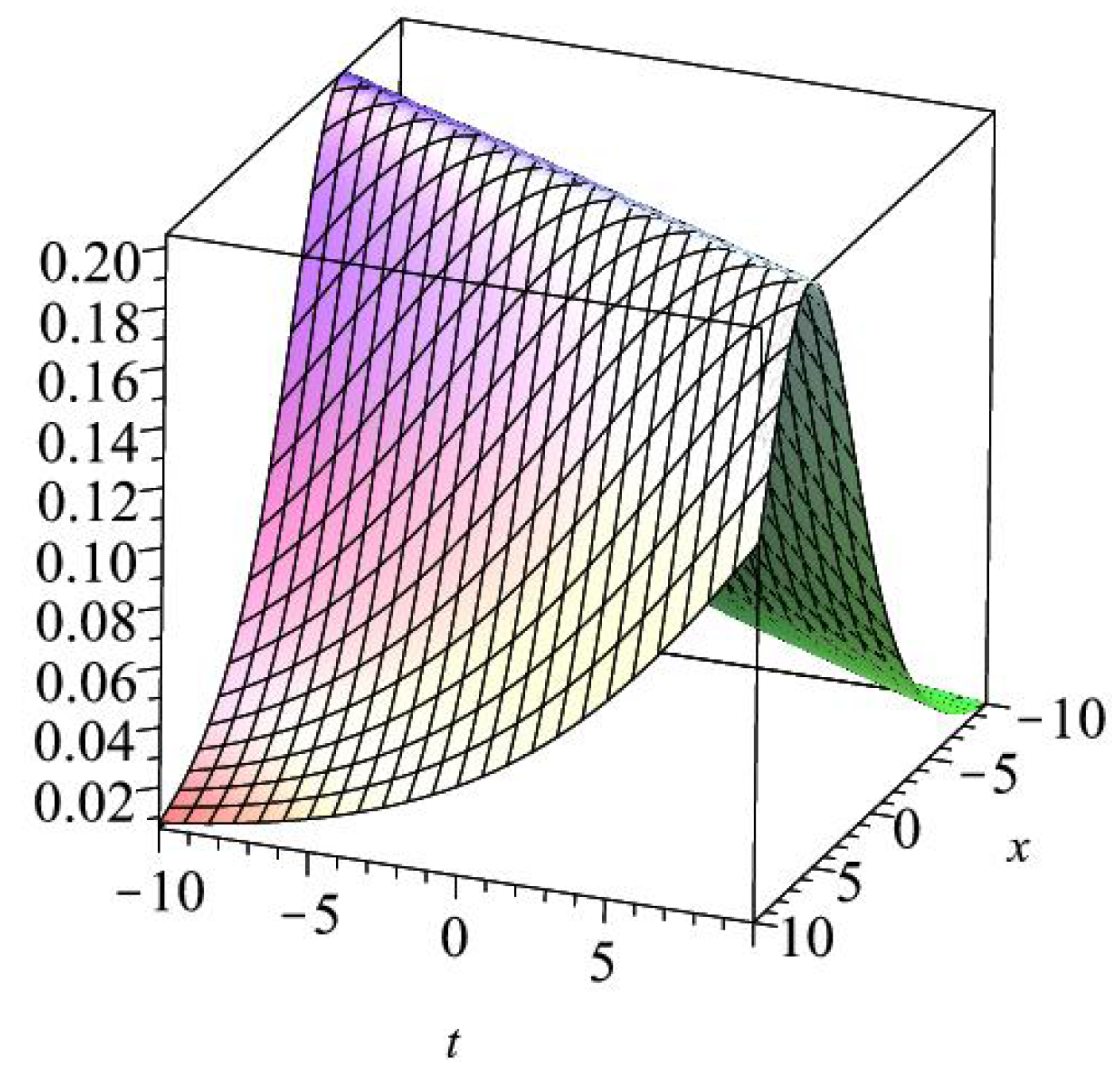
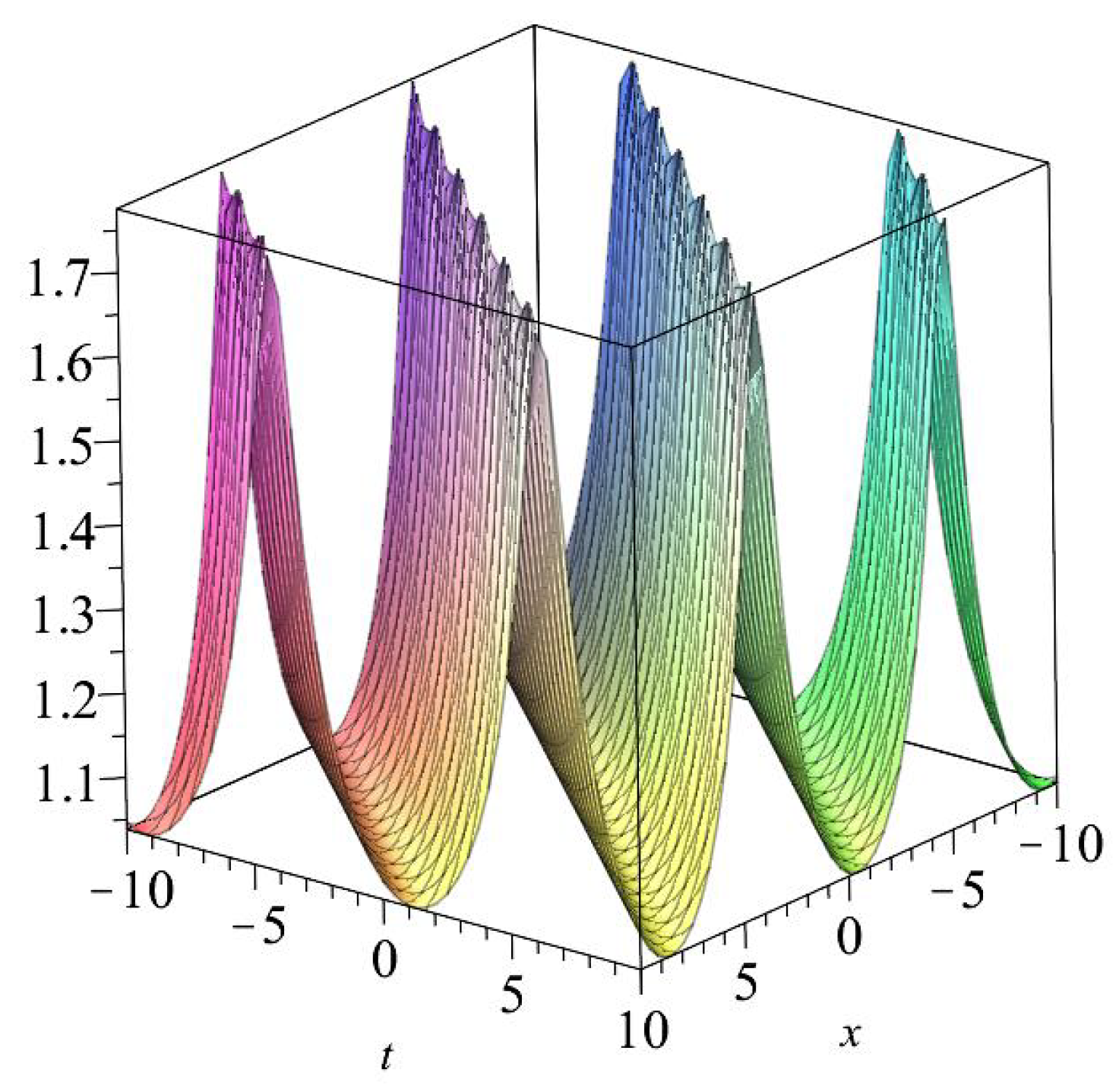
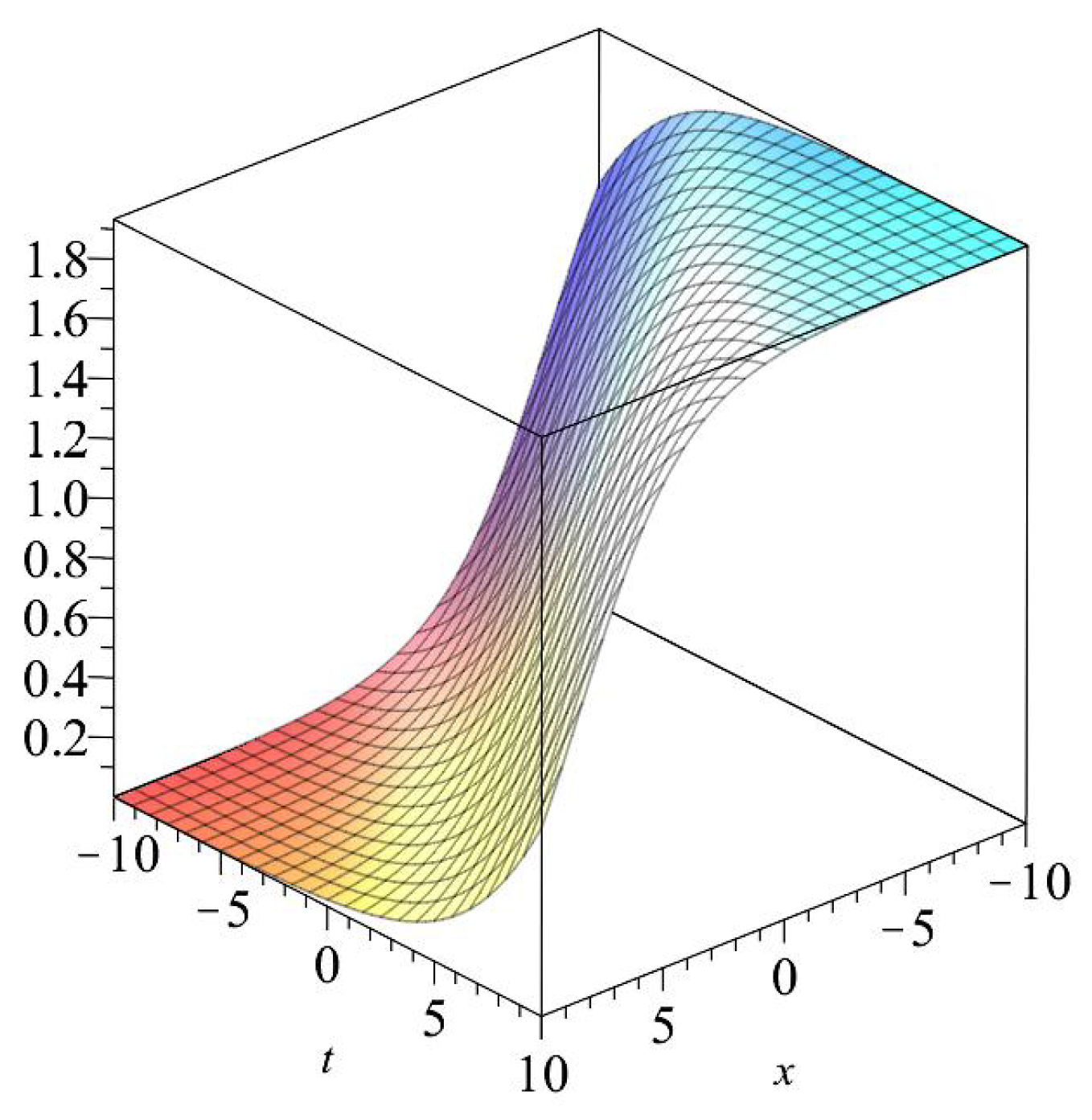
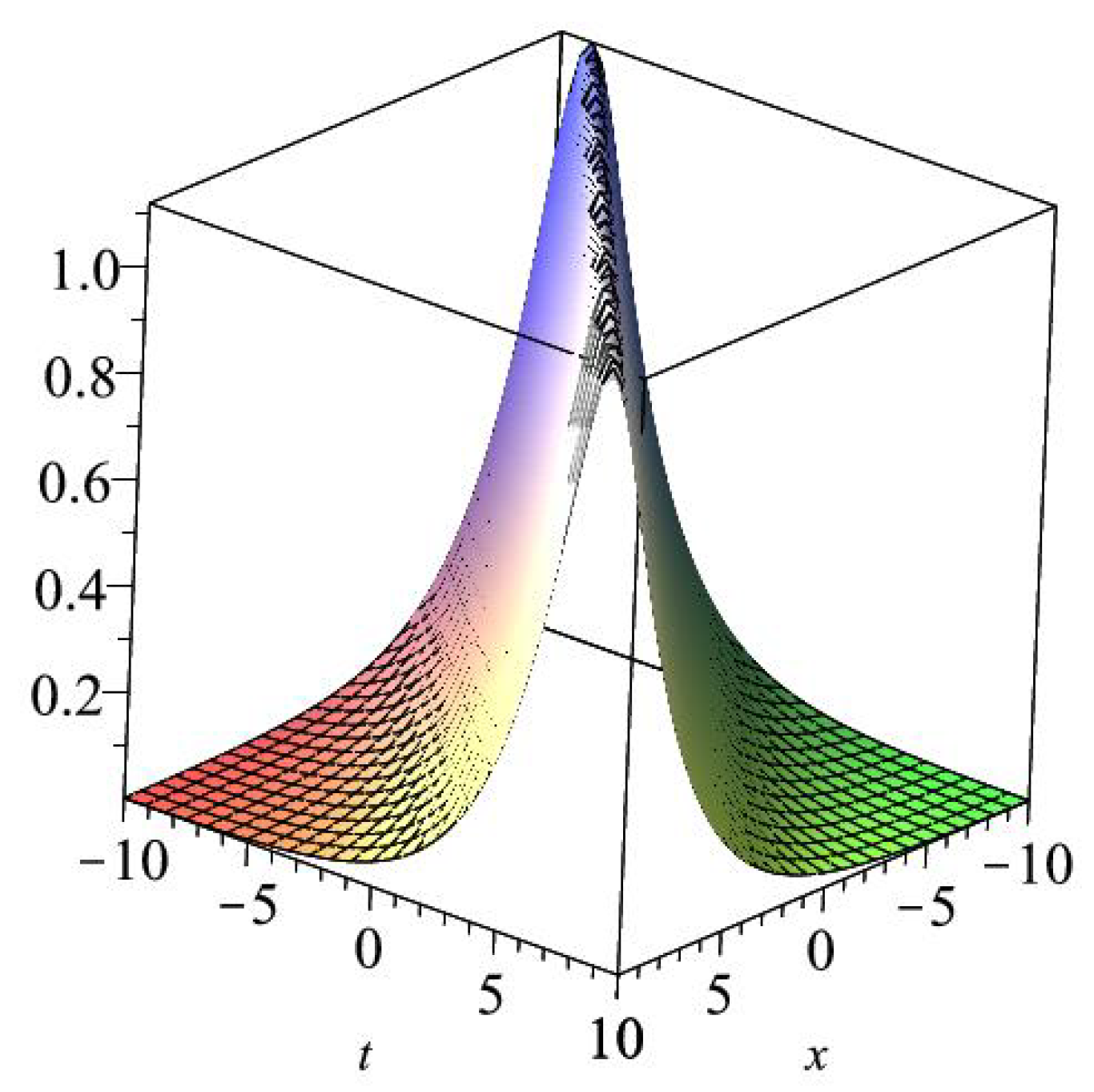
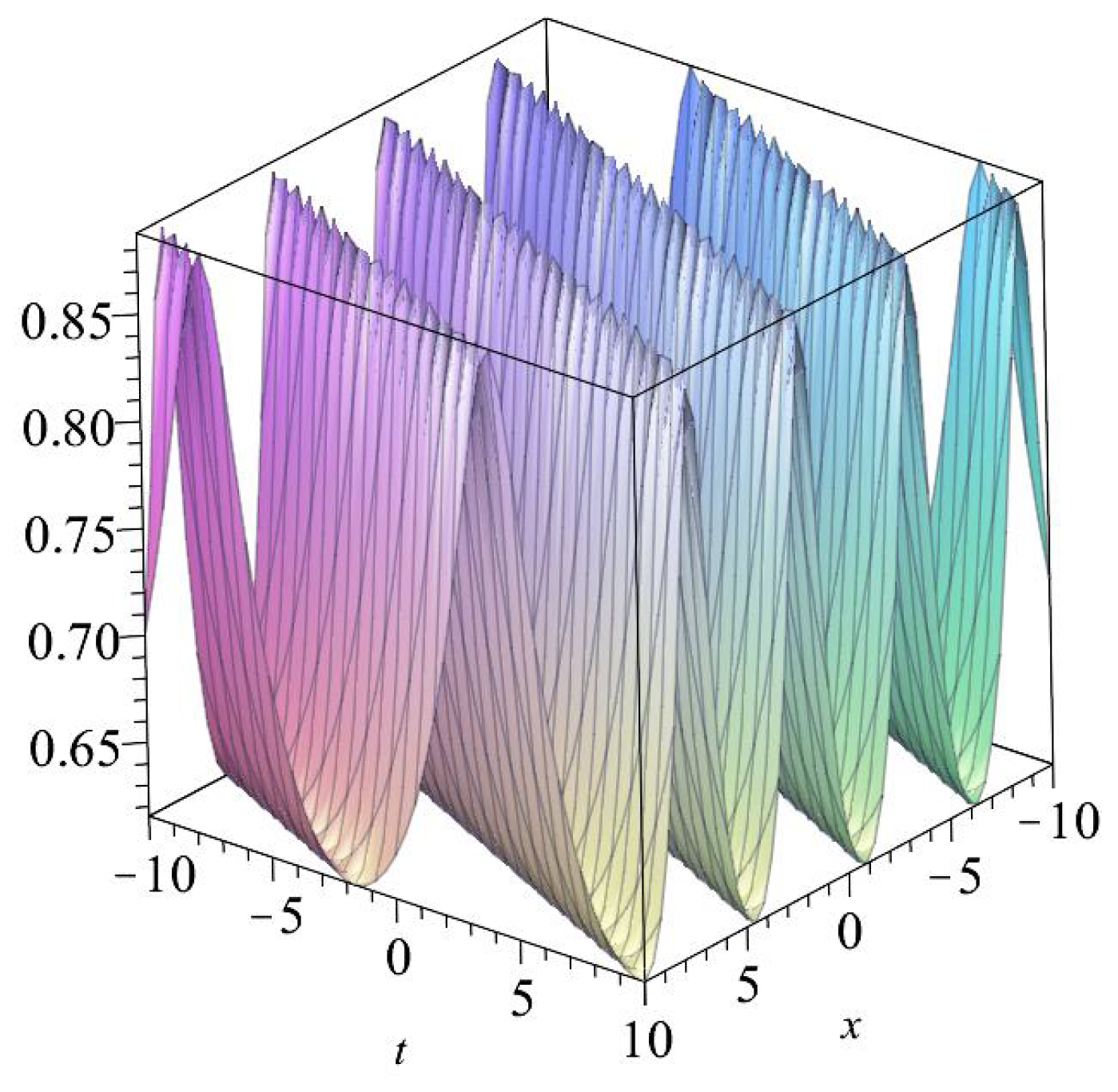
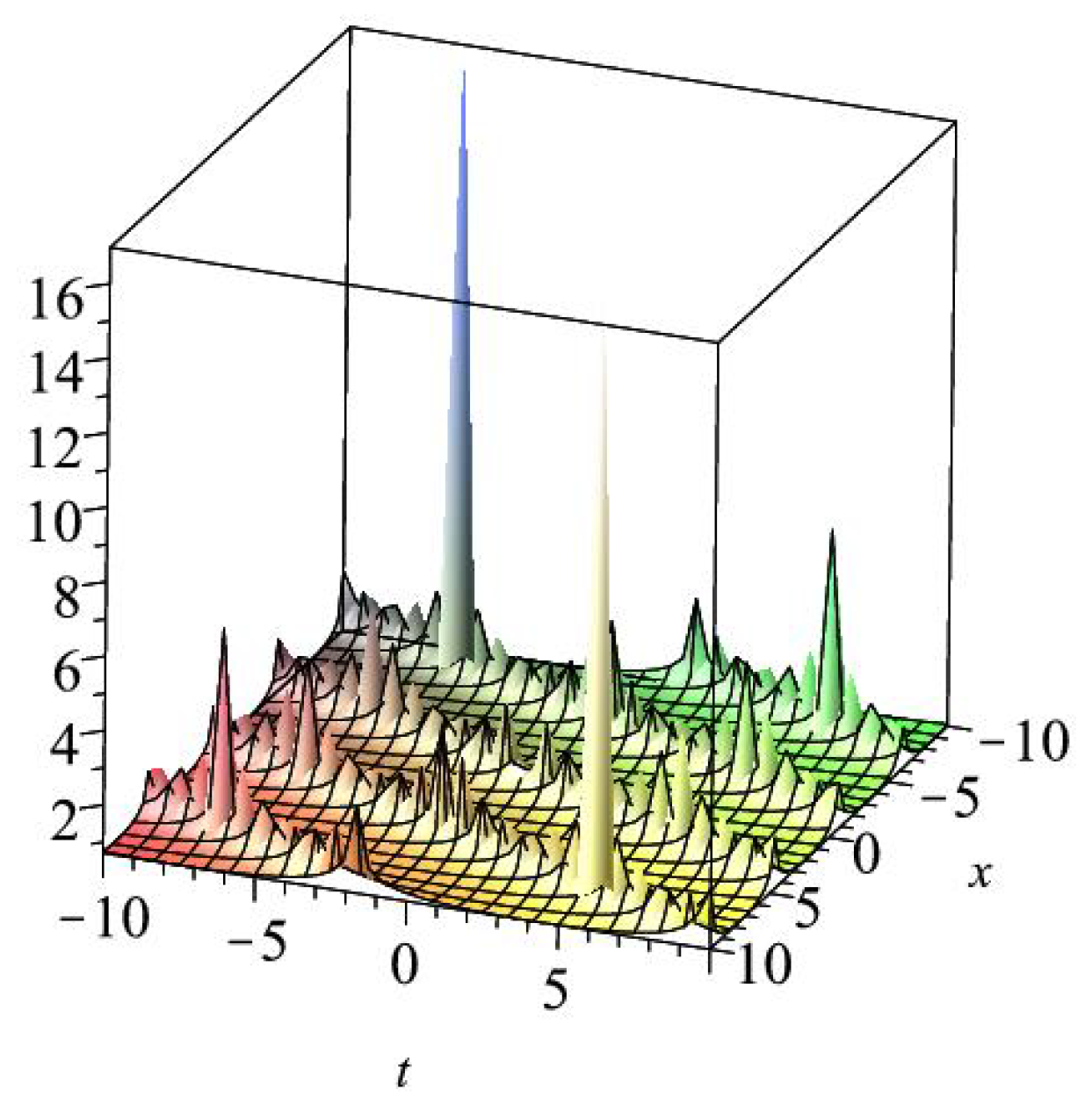
© 2018 by the authors. Licensee MDPI, Basel, Switzerland. This article is an open access article distributed under the terms and conditions of the Creative Commons Attribution (CC BY) license (http://creativecommons.org/licenses/by/4.0/).
Share and Cite
Ghanbari, B.; Baleanu, D.; Al Qurashi, M. New Exact Solutions of the Generalized Benjamin–Bona–Mahony Equation. Symmetry 2019, 11, 20. https://doi.org/10.3390/sym11010020
Ghanbari B, Baleanu D, Al Qurashi M. New Exact Solutions of the Generalized Benjamin–Bona–Mahony Equation. Symmetry. 2019; 11(1):20. https://doi.org/10.3390/sym11010020
Chicago/Turabian StyleGhanbari, Behzad, Dumitru Baleanu, and Maysaa Al Qurashi. 2019. "New Exact Solutions of the Generalized Benjamin–Bona–Mahony Equation" Symmetry 11, no. 1: 20. https://doi.org/10.3390/sym11010020
APA StyleGhanbari, B., Baleanu, D., & Al Qurashi, M. (2019). New Exact Solutions of the Generalized Benjamin–Bona–Mahony Equation. Symmetry, 11(1), 20. https://doi.org/10.3390/sym11010020





